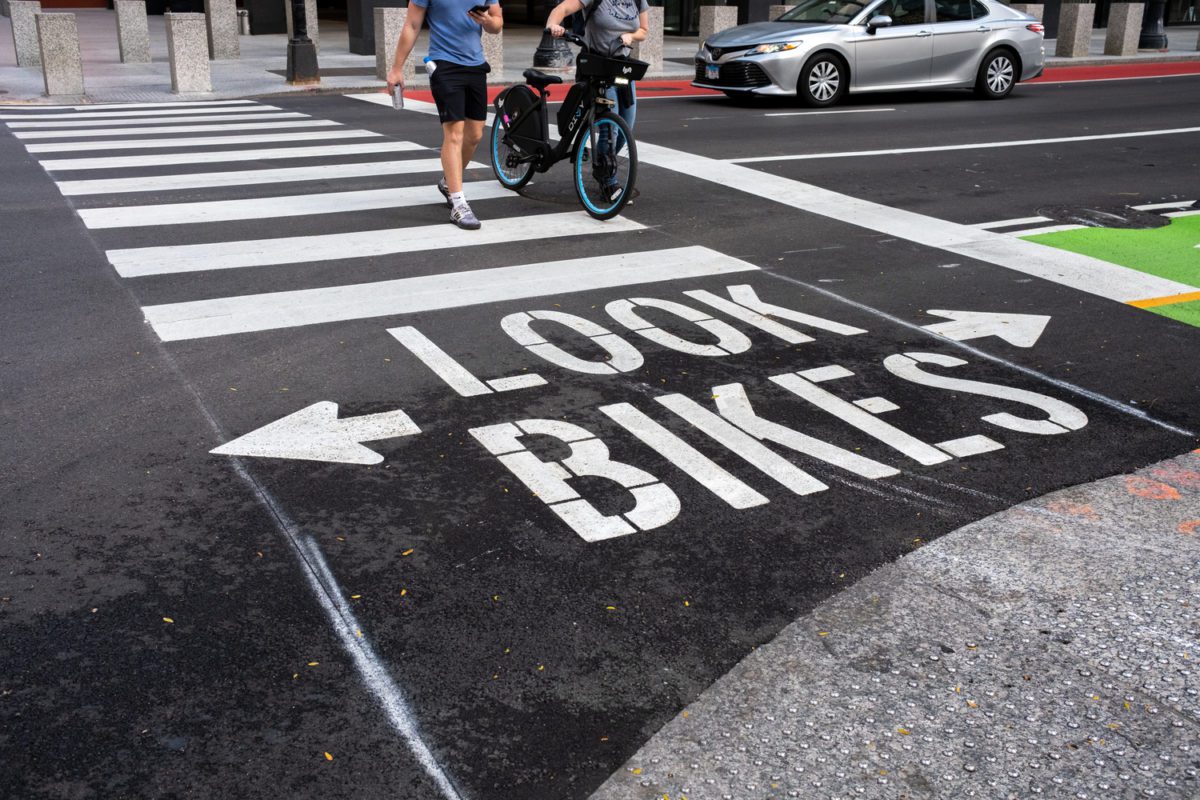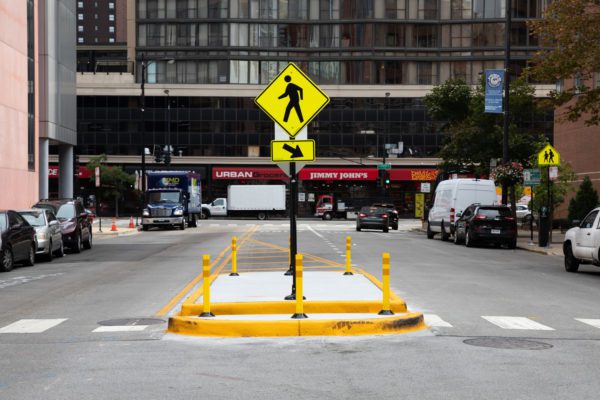
Civiltech is working with the Chicago Department of Transportation (CDOT), as part of their Arterial Resurfacing program, to implement pedestrian, bike, and transit-focused improvements. The evolution to expand the AR program from strictly pavement rehabilitation to including pedestrian, bike, and transit facility work sprung from the idea that for minimal additional cost, agencies can include these additional improvements in the federal funds dedicated for the associated street resurfacing.
Civiltech began working on CDOT Arterial Resurfacing projects in 2015. Through the program, 40 miles of streets are resurfaced annually divided evenly between four regions of the City. Originally and for many years, the program just focused on pavement rehabilitation.
In 2016, Civiltech began working with CDOT’s pedestrian group to implement pedestrian improvements along with the associated street resurfacing. At that time, the pedestrian facility work was minimal, limited to work to just a few corridors or intersections each year. This initial addition of pedestrian facility work focused on locations with elevated safety concerns such as school crossings. Then in 2017, CDOT’s bicycle group got involved in the program and the resurfacing projects began including bike facility improvements as well.
In 2018, CDOT chose to revamp the entire program and treat each Arterial Resurfacing project with a Complete Streets approach. Now every corridor targeted for a resurfacing project is also looked at for improved pedestrian and bicycle access and safety. The program includes resurfacings and pedestrian improvements on county-jurisdiction roads as well.
The Civiltech team studies every intersection within the corridor targeted for resurfacing to determine where pedestrian access and safety can be improved. Pedestrian improvements can include ADA compliant features, pedestrian curb extensions for reducing street crossings, pedestrian refuge islands, and safer bus stop accommodations.
Additionally, each corridor is studied for the addition or improvement of bicycle facilities. Considerations include not only the determination of bike lane locations, but the team looks at each corridor as part of a larger network to determine if a bike lane on a specific street will contribute to a contiguous bike system within the city.
Through the Arterial Resurfacing program, Civiltech has provided CDOT with the much-needed engineering manpower to tackle this effort. In addition to the fast-paced design work, the team also provides coordination with the various CDOT groups that collaborate on the projects and with the aldermen whose wards are being served.
Determining the scope of work within the annual targeted corridors begins with the Civiltech team meeting with the various CDOT groups to gain an understanding of their goals and needs. Then the team studies every intersection within those corridors to look at existing conditions and determine the type and scope of improvements possible in each area.
The success of this program can be captured by the statistics. Since 2018, the Arterial Resurfacing work has not only rehabilitated 160 miles of roadway, it has included 45 miles of reinstalled bike facilities, 15 miles of new bike facilities, 1,129 curb extensions and 568 pedestrian refuge islands. The Civiltech team is proud to be working with CDOT to make all modes of transportation safer in corridors throughout the City.
